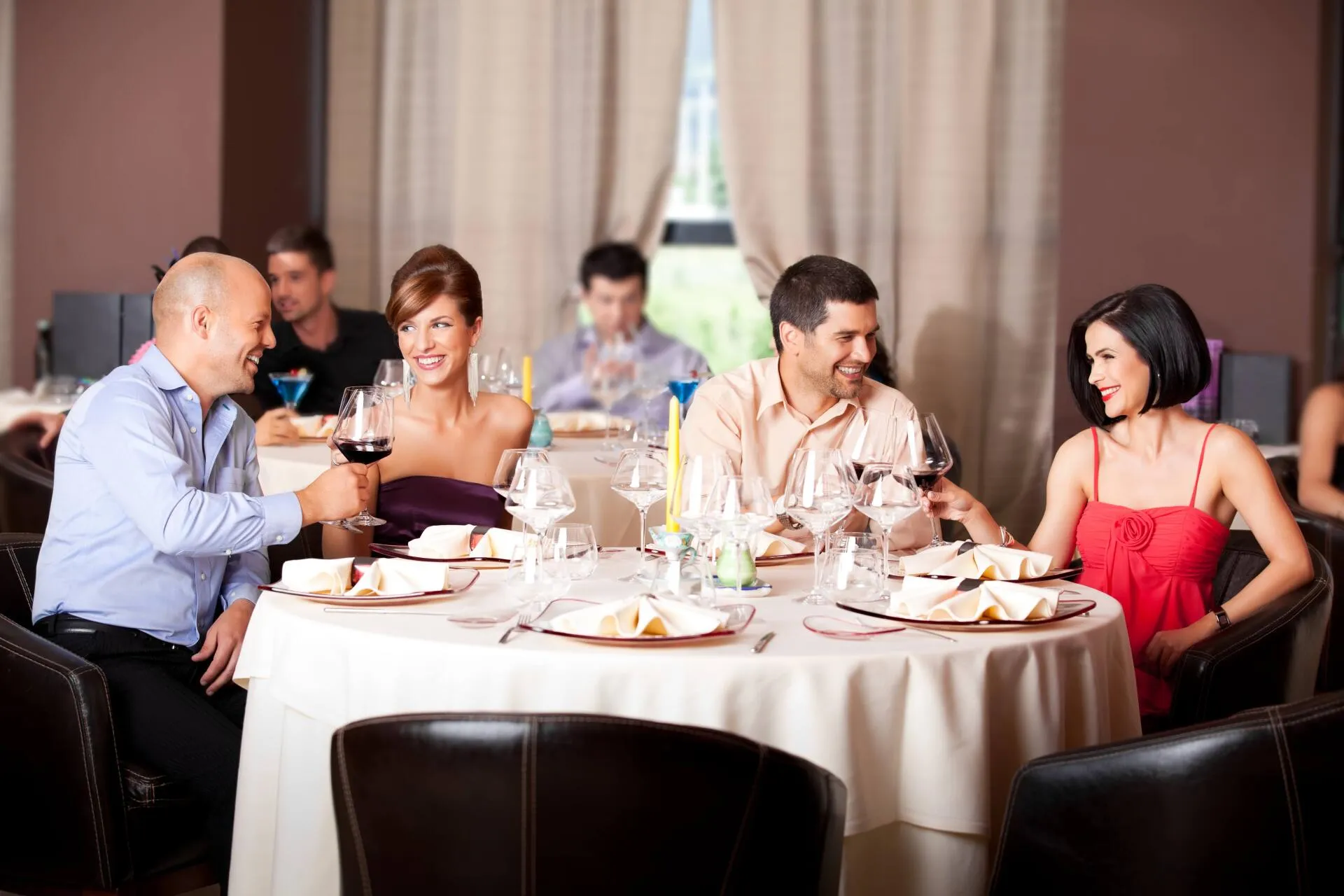4 Catering Styles to Fit Your Wedding’s Style and Budget
The food you serve at your wedding is an important part of not only providing for guests but also setting the mood and style. So, what serving choices do you have for meals on your big day? And what does each bring to the table, as it were? Here’s a short guide to the main wedding catering styles.
1. Plated Dinner
Certainly, the most formal of all catering styles is the full plated dinner. This is a traditional part of many weddings, allowing guests to experience the feeling of being served at a nice restaurant. Most plated dinners consist of one to three courses, and guests may select from a limited choice of main ingredients (for instance, chicken, fish, or a vegetarian option).
Plated dinners are elegant and make guests feel special, but they’re also often the most complex catering style. Catering staff prepares plates behind the scenes, but you also need servers to attend to diners. These servers generally also keep things clean and clear plates as guests finish courses. Don’t forget to allot sufficient time if serving multiple courses.
2. Buffet
The wedding buffet is a much more relaxed meal. The food choices are placed on long tables and kept at the appropriate temperatures while guests file past and select what they want to eat. At our venue, the Catering staff will serve for portion control and monitor the buffet tables — replacing food choices as needed, helping guests, and keeping things neat and tidy. Large weddings may have more than one buffet station.
When you provide a buffet, it’s a much more casual meal — and it may be too casual for some wedding themes. Guests also have to stand in line for food, which isn’t always a fun part of the wedding experience.
3. Family-Style
Want something in between a full plated dinner and the do-it-yourself style of a buffet? Try family-style service. With this approach, platters of food are brought to each table so that guests can pass them around and serve themselves. In control of their own meals, guests may feel more satisfied by your wedding food. And family-style encourages interaction among people at a table, helping break the ice.
Of course, family-style meals — as most families will attest to — can get messier than letting servers handle things. All that food being passed around and self-service can make things messier than expected. It’s also harder to gauge the amount of food needed since guests decide how much they want and which foods they want.
4. Cocktail Party
Not every couple must provide a full, sit-down meal to their guests. There are many reasons why you might opt to skip this step. Certainly, if you’re on a limited budget, formal meals may not be a viable option. However, some couples just want to shorten the length of their wedding festivities or simplify the planning process by removing meal service.
What can you do instead of serving a big dinner? Go with cocktail party food instead. Set up one or more stations where finger foods are served in small quantities. You can usually provide a wider range of choices and even indulge in some experimentation. The cocktail approach is faster than most seated meals and is often more fun for guests.
Where to Start
Want to know more about these or other catering styles for your nuptials? Start by meeting with the team at Pristine Chapel Lakeside. No matter what your wedding timeline, budget, or goals are, we can help you find the right food service to bring your vision to life. Call today to make an appointment or get answers to your questions.

